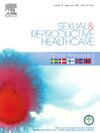Examining the impact of an online educational video on the contraceptive knowledge, awareness and choices of young women living in rural and remote Australia
IF 1.7
3区 医学
Q3 PUBLIC, ENVIRONMENTAL & OCCUPATIONAL HEALTH
引用次数: 0
Abstract
Objective
To assess whether an online educational video, tailored to young women living in rural and remote areas, increases their contraceptive knowledge, preference for and uptake of long-acting reversible contraception (LARC).
Study Design
A single group pre-post survey design, in which participants completed the pre-video survey (S1), watched the 13-min video, then completed a survey immediately after (S2) and 6 months later (S3). Outcomes were analysed using McNemar tests and multivariate logistic regression.
Results
A total of 153 participants watched the video and completed S1 and S2; 56 % of these completed S3. Prevideo (S1) 33 % of participants were unaware of LARC methods. Only 3 % rated their knowledge about every method as high. Knowledge improved immediately post video (S2) for all methods (aOR 12.5, 95 % CI 5.2 to 29.8) and LARC methods (aOR 7.9, 95 % CI 4.3 to 11.8). Overall method preference for LARC increased from 23.5 % (n = 36) at S1 to 48 % (n = 74) at S2. Likelihood of using a LARC increased at S2 (aOR 2.1, 95 % CI 1.5 to 2.9). The overall proportion of participants using a LARC increased from 18 % at S1 to 21 % at S3, however, this increase was not significant (p = 0.3).
Conclusion
Our findings underscore the effectiveness of tailored online educational videos in enhancing contraceptive knowledge and preference for LARCs amongst young women living in rural and remote areas. However preference did not translate into uptake, suggesting that structural and other barriers may be prominent.
Implications
This study emphasises the need for a multifaceted approach to facilitating young womens’ access to effective methods of contraception, including LARC. Efforts to promote knowledge should be coordinated with place-based initiatives and policies that directly address the structural barriers to accessing critical sexual and reproductive health services unique to women in rural and remote areas.
研究在线教育视频对澳大利亚农村和偏远地区年轻女性避孕知识、意识和选择的影响。
研究目的:评估针对农村和偏远地区年轻女性的在线教育视频是否能提高她们的避孕知识、对长效可逆避孕药具(LARC)的偏好和使用率:评估针对生活在农村和偏远地区的年轻女性量身定制的在线教育视频是否能提高她们的避孕知识、对长效可逆避孕药具(LARC)的偏好和使用率:研究设计:采用单组前-后调查设计,参与者完成视频前调查(S1),观看 13 分钟视频,然后立即完成调查(S2)和 6 个月后(S3)。结果采用 McNemar 检验和多变量逻辑回归进行分析:共有 153 名参与者观看了视频并完成了 S1 和 S2;其中 56% 完成了 S3。观看视频(S1)前,33% 的参与者不了解 LARC 方法。只有 3% 的人认为他们对每种方法的了解程度都很高。观看视频(S2)后,对所有方法(aOR 12.5,95 % CI 5.2 至 29.8)和 LARC 方法(aOR 7.9,95 % CI 4.3 至 11.8)的了解程度立即提高。对 LARC 方法的总体偏好从 S1 阶段的 23.5%(n = 36)增加到 S2 阶段的 48%(n = 74)。使用 LARC 的可能性在第二次调查时有所增加(aOR 2.1,95 % CI 1.5 至 2.9)。使用 LARC 的总体比例从 S1 的 18% 增加到 S3 的 21%,但这一增加并不显著(p = 0.3):我们的研究结果表明,量身定制的在线教育视频能有效提高农村和偏远地区年轻女性的避孕知识和对 LARCs 的偏好。然而,偏好并没有转化为接受,这表明结构性障碍和其他障碍可能很突出:这项研究强调,有必要采取多方面的方法,帮助年轻女性获得有效的避孕方法,包括 LARC。促进知识普及的工作应与基于地方的倡议和政策相协调,直接解决农村和偏远地区妇女在获得关键性健康和生殖健康服务方面所面临的结构性障碍。
本文章由计算机程序翻译,如有差异,请以英文原文为准。
求助全文
约1分钟内获得全文
求助全文
来源期刊

Sexual & Reproductive Healthcare
PUBLIC, ENVIRONMENTAL & OCCUPATIONAL HEALTH-
CiteScore
2.70
自引率
5.60%
发文量
73
审稿时长
45 days
 求助内容:
求助内容: 应助结果提醒方式:
应助结果提醒方式:


